The “Henrietta Napier Changemaker Awards” will identify one outstanding person for their service and excellence in each of the following areas: Public Health, Health Care, Social Work, Nutrition, Housing, Social Justice, Education and Unsung Hero. The award winners will be recognized and receive a commemorative plaque to be presented at the Henrietta Napier Expo, which will be held July 16, 2022.

Background
Mrs. Henrietta Napier was hired as the first African American Public Health Nurse in McLennan County in 1954. She served in that capacity for 42 years for what is currently known as the Waco-McLennan County Public Health District. She was well known by many as the school nurse who gave shots as well as the nurse who cared for so many pregnant women and children. She also worked in the areas of well child health, Tuberculosis Control, and home visiting. Her compassion and dedication to her community was exemplary. Many clients came to the Health District during her tenure and long afterwards seeking her assistance. She was always professional and compassionate in the care she provided clients and co-workers.
St. Luke African Methodist Episcopal Church, Prosper Waco and Waco-McLennan County Public Health District wish to actively recognize and honor the outstanding service, dedication, and excellence of individuals who serve their communities in addressing the Social Determinants of Health (Health Care Systems, Community and Social Context, Food, Neighborhood and Physical Environment, Education, and Economic Stability). The awards will be given to individuals who work in the areas of Public Health, Health Care, Social Work, Nutrition, Housing, Social Justice Education and Unsung Hero. With the exception of Unsung Hero, the other disciplines are self- explanatory. The Unsung Hero award will be given to a representative serving as a Certified Nurse Assistant (CNA) or Medical Assistant (MA).
Nomination Process
1. Nominations may be submitted by another individual or directly by the nominee.
2. Nominations are to be submitted no later than 5:00 p.m. CST on Friday, May 27, 2022. Late applications will not be accepted.
3. The Nomination Review Committee, made up of Prosper Waco’s Access to Healthcare working group and Henrietta Napier Expo committee members, will review the nominations using an evaluation score sheet to select winners.
4. All submissions must be complete. Incomplete applications will not be considered.
PLEASE NOTE:
All questions should be submitted to Dr. Carolyn Scott, Ph.D. at drcscott3@yahoo.com and Sherry Williams at sherrylulu420@gmail.com, Questions will be answered as quickly as possible.
By Ferrell Foster
An encounter with a stranger haunts me.
Last month, in the midst of the winter storm, we decided to flee our powerless house for my daughter’s house in another town. It was Tuesday afternoon. We had been without power almost all of the time since 8 a.m. Monday. The temperature had dropped to 2 or 3 degrees outside Tuesday morning.
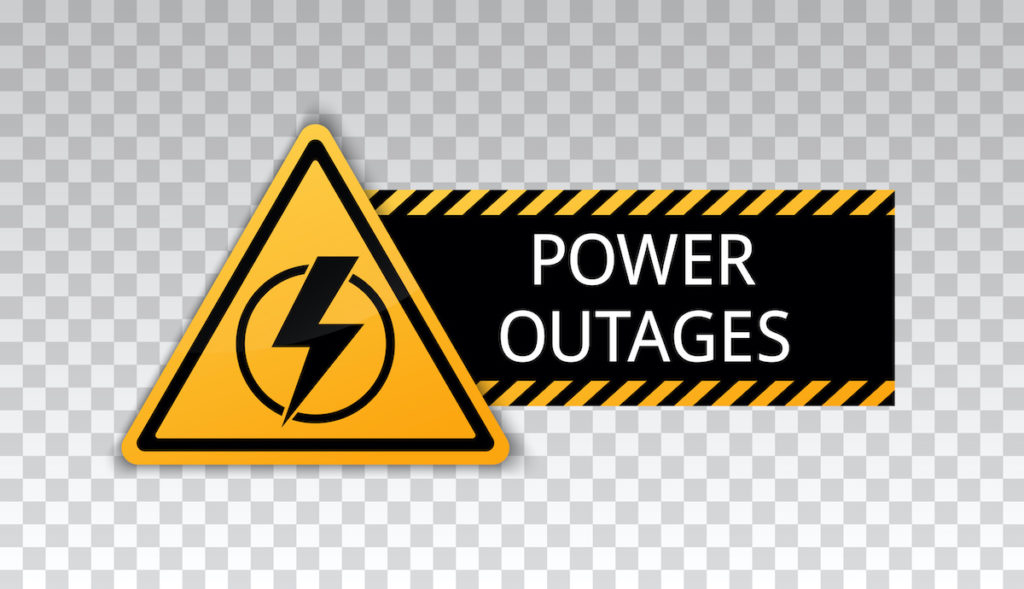
We motored northward and stopped a little north of town to get gas. Inside the store, I stood in a two-pronged line waiting to check out.
A woman, shorter than me and probably not as old as me, took her place in the line adjacent to me. She smiled big and had a happy lilt in her voice.
“We haven’t had power in two days,” she said.
“I know. We’ve been without power, too,” I responded.
“It got down to 27 degrees in our house last night,” she said, still with a bit of mirth in her voice.
“Oh, my,” or something like that, was all I could say.
Lines advance. She checks out; I check out. We go our ways.
So why can’t I forget this encounter? For a simple reason.
The woman and I both lived through a powerless night when the temperature outside dropped almost to zero. She lived in a 27-degree icebox of a house. The temperature in our house never dropped below 52.
People with resources encounter some of the same challenges in life that those with less resources face, but we do not deal with these challenges on equal footing. Not only did my house keep my family and me much warmer than this woman’s, but we also had someplace to go.
One of my daughters stood in the line with me. After we left, I commented on the woman’s situation in contrast to ours, and Tabitha noted that the woman still seemed to have on her pajamas with a house coat on top. I hadn’t noticed.
This woman was not dressed for travel. Chances are she headed back to her icebox and had to wait who knows how long for relief. Still, she smiled.
Driving northward, Tabitha read me a news account of the power outages in East Waco. This story included a quote from my friend, Waco Council Member Andrea Barefield. She spoke to the importance of alleviating the infrastructure problems in East Waco.
Our neighbors who are most in need should be our highest priority. People in poorer neighborhoods should have the absolute best when it comes to streets, water, and power because they already have enough challenges.
Why is it so often the other way around in cities across this country? It doesn’t have to be; Waco can be different. We can give our best to those who have the least.
We stand or sink together as a community from East Waco to North and South and West. We are Waco; we seek our best.
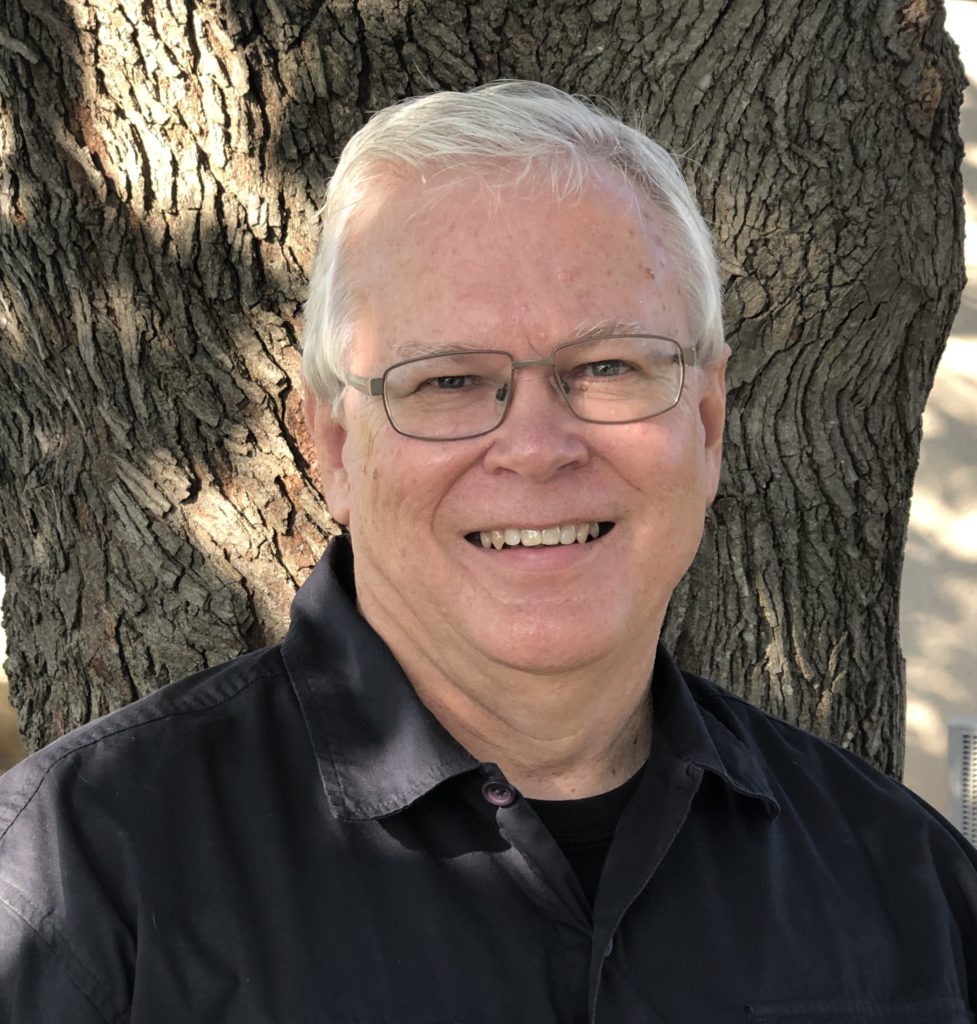
Ferrell Foster is acting executive director of Act Locally Waco and senior content specialist for care and communication with Prosper Waco.
(During these last few weeks of December we will be reprising the Top 10 Most Opened Blog Posts for 2018 from the Act Locally Waco blog. I couldn’t possibly pick my favorites – so I used the simple (cop out?) approach of pulling up the 10 blog posts that got the most “opens” according to our Google Analytics. It is an intriguing collection that gives at least a little insight into the interests and concerns of Act Locally Waco readers. I hope this “Top 10” idea inspires you to go back and re-read your personal favorites. There have been so many terrific ones… If you would like to see the Top 10 according to Google Analytics, here’s the link: Top 10 Most Opened Blog Posts of 2018. Merry Christmas! — ABT)
By Christy Perkins
The Community Health Worker Initiative is an innovative program designed to bridge the gap between the community and available resources. The program methodically targets 4 zip codes in Waco that could benefit from these resources: 76704, 76705,76706, and 76707. As Community Health Workers (CHW) we are trained to respond to cultural diversity with understanding and acceptance to help clients overcome barriers to using the available health resources. Our role is to connect clients to resources and help them navigate the healthcare system. By doing so, we help individuals reach a state of self-sufficiency to create a healthy and thriving community. We aim to build trusting relationships with our clients, to increase basic and critical health education that will develop confidence in those facing adversity, and to decrease unnecessary emergency (E.R) visits.
In 2016, I began purposefully researching and embedding myself into organizations and projects that are geared toward advocacy and health. I became passionate about client advocacy after personal life experiences left me in the dark about such services. When my oldest son fell ill as an infant, I didn’t know that patient advocates were available to help me manage this uncertain and scary time in my life. No one stepped in to advocate on our behalf by making me aware of available services that could support my son. That is when I became prayerful and intentional in regard to advocacy and awareness. I grew interested in holistic methods of health during that time and now find myself on the path to become more educated in this area. I saw this opportunity with the Waco-McLennan County Public Health District as a foot in the door to professionally connect to, advocate for, and educate individuals who have been left in the dark like I once was. I aspire to be a voice for those who feel their voice has been silenced.
In preparing to become a CHW, my coworkers and I underwent 160-hours of training over the course of 4 months to become certified by the Texas Department of Human Services (TDHS). The training covered 8 core competencies: communication, interpersonal, service coordination, capacity building, advocacy, teaching, organizational, and knowledge base skills. During training, we began attending coalition meetings, community meetings that were open to the public, toured facilities of community organizations, and had several guest speakers who assist the community explain their services. Additionally, I’m an active participant in Leadership Plenty, Round 7, which builds skills in community leadership, managing conflict, diversity, and taking action. The CHW training together with the leadership training are important tools when working with clients and partners.
Now that my fellow CHW’s and I have completed our training, we are preparing our first project! We will be hosting launch parties in the 4 zip codes that are the focus of this program. This will be an opportunity for the community to become familiar with the CHW’s assigned to their neighborhoods as well as enjoy the festivities that we and our community partners will have available to the families. Check out our new Facebook page — McLennan County Community Health Worker Initiative — for updates on these events!
I am truly looking forward to helping my CHW team in piloting this program. I feel the beauty of this program is that we are able to meet our clients where they are in their current life situation and create an action plan that is attainable within our capacity. My hope is to assist them with self-reliance when developing goals they desire to achieve and that will be beneficial to their well-being. In turn, creating a partnership with those clients to assure them I am dedicated to their personal successes. I will strive to access integrative resources on their behalf while preparing them to confidently do so independently. My personal goal is to specialize in nutrition and help guide others in holistic lifestyle choices to improve their quality of life.
I look forward to continuing to build relationships with community partners to tackle the problems of our community by collecting information at the grassroots level that will support and develop this program. We will be working closely with the healthcare system in Waco to assure that this program is effectively aiding the community.
I’m looking forward to working with my fellow CHW’s in beginning walking groups within the communities we are serving. This is an example of the kinds of efforts that will help us connect with fellow residents and encourage healthy lifestyle routines. This is an exciting time for us as we embark on a mission that will shape a program that has been conjured up through discussion, data development, and planning for years. What an honor it is to be entrusted as the charter group to thrust this project into a flourishing program!
 Christy Perkins is a certified Community Health Worker for zip code 76707. She currently serving on the Garden Committee at Brook Avenue Elementary. She is looking forward to becoming a graduate of the prestigious leadership training with the Leadership Plenty Institute in March of 2018 and serving on the YMCA, Young Junior Professionals Board. When she isn’t involved in community work, she is a Mother of 3 handsome boys. They keep her life busy and entertaining. She has a passion for writing, reading, and fellowship. She is originally from Amarillo, Tx but has grown to love Waco, Tx and is looking forward to building a future here. You can reach her at cperkins.chw@gmail.com or on Facebook at McLennan County Community Health Worker.
Christy Perkins is a certified Community Health Worker for zip code 76707. She currently serving on the Garden Committee at Brook Avenue Elementary. She is looking forward to becoming a graduate of the prestigious leadership training with the Leadership Plenty Institute in March of 2018 and serving on the YMCA, Young Junior Professionals Board. When she isn’t involved in community work, she is a Mother of 3 handsome boys. They keep her life busy and entertaining. She has a passion for writing, reading, and fellowship. She is originally from Amarillo, Tx but has grown to love Waco, Tx and is looking forward to building a future here. You can reach her at cperkins.chw@gmail.com or on Facebook at McLennan County Community Health Worker.
The Act Locally Waco blog publishes posts with a connection to these aspirations for Waco. If you are interested in writing for the Act Locally Waco Blog, please email ashleyt@actlocallywaco.org for more information.
By Craig Nash
One of my favorite pastimes as a Wacoan is talking about Waco. Of the small handful of places I have lived in my life, none have been as self-reflective as this community. This has been the case at least since I moved here in the summer of 2000, and has reached new levels of intensity over the past few years as cameras have been rolling and downtown booming. In those early days all our talking was about potential. “If only” type conversations. We still talk about potential a lot, but enough “If onlys” have occurred that we have allowed those conversations to happen less frequently.
But as much as I love talking about and reflecting on the life of this city, I enjoy more the times spent on my block full of individuals and families who aren’t expending a lot of energy thinking and talking about Waco, its potential, past or current status. I live in Sanger Heights, but within seven blocks of my house are the Brook Oaks, North Waco, Dean Highland, Brookview and Heart of Texas Neighborhoods. It’s the nexus of the Waco solar system, really, and it contains multitudes. As far as I can tell, no one on my block are close friends with anyone else on the block. We don’t have neighborhood parties or borrow sugar and eggs from each other. But we are neighborly.
For the first 2-3 years I lived in my current house, there was a lot of transition on the block and, perhaps connected, a lot of crime. My immediate neighbors to the north had lawn mowers and air units stolen. There were gunshots regularly. I had 7 break-ins within a three year span. I can’t be sure if they stopped because I finally got a home alarm system or word just got around that I owned nothing of value, but overall it has become a quiet, peaceful neighborhood.
I’ve seen kids grow up in the neighborhood. Luis, who was eight when I first moved in, is now a senior at Waco High. I once bought him a new soccer ball because my dog destroyed one he accidently kicked into my back yard. Ever since, he has rolled my trash bin back to the house from the curb in the evening about once a month. I’m not saying this is a deliberate long-term exchange of kindness on his part, but I like to think it is. Every time I am seen doing work on the exterior of my house, (which, as anyone who has seen my house knows, isn’t that often,) Luis’ dad, Miguel, asks me if I am moving. He is always relieved when I tell him I have no plans to move anytime soon. In his broken English he tells me how much he likes the current stability of the neighborhood. He doesn’t use those words, of course, but just says, “I’m afraid of new people moving in all the time.”
There is a new family in the neighborhood, though, that has changed things for us. Jayden acts and talks like an 11 year old, because he is 11 years old, but looks like a 15 or 16 year old. He’s brightened the place up. He knocks on every door in the block asking if any of us have work for him, but really he just likes to talk. When he first arrived he offered to mow my yard for $2. Still under the impression that he was older than what he is, I obliged, and SHOCKED him when I told him I’d pay him THREE TIMES what he was offering. When I looked out and saw that he didn’t really know what he was doing, (mowing in squiggly lines and circles,) I asked if he’d ever mowed a yard before. He said, “Yeah, I just mowed YOUR yard.” Containing my laughter I asked and discovered his real age. Not only did I get a cheap lawn service that day, I also got an opportunity to teach an 11 year old how to mow a lawn, as my dad had taught me when I was a kid.
I should mention that I am the only white person on my block. It’s not the first “majority minority” neighborhood I’ve ever lived in, but it is the first time where the disparity has been so prominent. I think this has given me a small sliver of understanding of how people of color have to exist in the “white people” world every minute of every day. It has made me more understanding, but mostly I enjoy the birthday parties where I am awakened from my slumber to look out the window to see a real-live mariachi band. Like the hip-hop music occasionally blaring from the speakers of my other neighbors, I don’t complain, and no one has ever called the cops on me for listening to the Grand Ole Opry too loud on Saturday nights.
We’ve all come to a silent understanding that we are neighbors. We’ll look out for each other if we need to. We’ll avert our eyes from time to time when we need to. But mostly, we will create a community simply by existing peacefully with each other in the same place. This is our Waco, the one we love, and we’re ok not talking about it with each other.
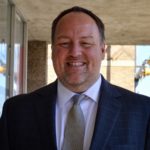 Craig Nash has lived in Waco since 2000. Since then he has worked at Baylor, been a seminary student, managed a hotel restaurant, been the “Barnes and Noble guy,” pastored a church and once again works for Baylor through the Texas Hunger Initiative. He lives with his dog Jane, religiously re-watches the same 4 series on Netflix over and over again, and considers himself an amateur country music historian.
Craig Nash has lived in Waco since 2000. Since then he has worked at Baylor, been a seminary student, managed a hotel restaurant, been the “Barnes and Noble guy,” pastored a church and once again works for Baylor through the Texas Hunger Initiative. He lives with his dog Jane, religiously re-watches the same 4 series on Netflix over and over again, and considers himself an amateur country music historian.
The Act Locally Waco blog publishes posts with a connection to these aspirations for Waco. If you are interested in writing for the Act Locally Waco Blog, please email ashleyt@actlocallywaco.org for more information.
by Liz Ligawa
Can you remember a time when you were not believed? As you think back to that time, how do you remember it impacting you? Was doubt able to sneak in and influence the credibility of your own story? Perhaps, as a response, you became a little more selective with what you shared, or at least, with whom you shared. I posed this same question to about 50 undergraduate students in a Human Diversity class where I was the guest lecturer. What we learned, as a class, of these kind of events was telling: incidents where our experiences were invalidated by doubt or unbelief began to invisibly shape how we related to others, but more significantly, we tended to wrap our truths with silence as we learned to navigate a world that had little room for our perspective.
This simple exercise I conducted with that class still resonates with me. It speaks of how one human experience can shape so many others. Although the examples shared were relatively light in nature, and were part of common childhood experiences, the impact of those incidents on the future behavior of these truth-sharers was great. I was not expecting behavioral changes to be the result of these incidents, but they were.
In our work, we speak a lot about collaboration. Our current posture toward collaboration comes from the realization that the work, and the outcomes we hope to achieve from this work, cannot happen without the collective work of many hands. In our urgency to approach the work with these many hands, however, I have observed a common forgetting (of sorts). We seem to forget that those hands are connected to people, and people function through relationships. In her book titled, Teaching Peace: A Restorative Justice Framework for Strengthening Relationships, Dr. Beverly Title alerts us to pay attention in this way. “Every relationship is valuable, no matter how insignificant it may first appear, as it is a potential window to wisdom,” (Title, 2011). Sometimes in our ambition to work, we forget that the hands are connected to people, and that it is in those people where the wisdom for the work is contained.
The Aspen Institute recently published a helpful review of community change initiatives (CCIs) over the last two decades so that the work going forward can be better informed. In their publication, the voice of relationship was also heralded as a necessary component toward change: “Comprehensive change in the most disinvested communities required effective working relationships across a multitude of community, private, and public institutions. Since poor communities had long been disconnected from outside entities, the key to sustained long-term change was to build cooperative connections,” (Kubisch, Auspos, Brown, & Dewar, 2010). In social work, we consider human relationships central to change. This is our value. So, how does this play out?
When joining the work of marginalized communities, or communities experiencing significant change, I pay attention to the role that disenfranchisement, or disconnection, has played in the life of the community. Feeling unheard is a great suffering. Not only is it difficult navigating systemic barriers that function oppressively, but it is also not the first thing that people want to talk about. Life is life, and most of us are busy just going about it. So, as I go about learning what life is like, I look for the many ways available to build the trust requisite to connect the hands to the work. Sometimes it means I show up. Sometimes it means I share. But most often, I find that trust is built on an ordinary path that many have left grown over. The path to trust is simply believing the truth that is entrusted to you. And, in the dignity of those every day moments, the work finally becomes shared, and perhaps our investments of hope fulfilled.
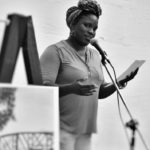 Elizabeth Ligawa is a recent graduate from Truett Theological Seminary, and the Diana R. Garland School of Social Work, earning both her Master of Divinity, and Master of Social Work. Though her prized role is being a mother to her dear son, Elijah, Liz has a love for encouraging people to come together in ways that engender healthy communities. Her role as the Director of Community Engagement at Prosper Waco allows her the room to work in and among the many faces of her beloved Waco community. She may be reached at liz@prosperwaco.org.
Elizabeth Ligawa is a recent graduate from Truett Theological Seminary, and the Diana R. Garland School of Social Work, earning both her Master of Divinity, and Master of Social Work. Though her prized role is being a mother to her dear son, Elijah, Liz has a love for encouraging people to come together in ways that engender healthy communities. Her role as the Director of Community Engagement at Prosper Waco allows her the room to work in and among the many faces of her beloved Waco community. She may be reached at liz@prosperwaco.org.
The Act Locally Waco blog publishes posts with a connection to these Aspirations for Waco. If you are interested in writing for the Act Locally Waco Blog, please email ashleyt@actlocallywaco.org for more information.
by Alexis Christensen
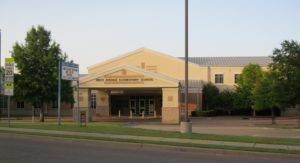 I have the privilege to work with three elementary schools within Waco ISD. They each have their unique strengths and challenges. Today though, I’m highlighting one campus in particular, West Avenue Elementary, located in the heart of North Waco on 15th Street.
I have the privilege to work with three elementary schools within Waco ISD. They each have their unique strengths and challenges. Today though, I’m highlighting one campus in particular, West Avenue Elementary, located in the heart of North Waco on 15th Street.
Waco Community Development began partnering with West Avenue in 2007. We started simply by asking people questions about their dreams and visions for their neighborhood and actively listened to their responses. Out of those conversations, our Family Engagement Program began. Today, when I ask people to describe what North Waco and West Avenue were like back then, I get responses like, “tore up” and “lots of prostitution and drug dealers” and “couldn’t see the good because of the bad.” When you looked at the neighborhood by the numbers during that time, it’s easy to see why people described their neighborhood like that. In 2009, there were 22 vacant retail/business spaces, 190 vacant residential lots, a poverty rate of 43%, and only 35% of residents were homeowners (NRS, 2009 & Census Bureau, 2000).
Yet, since the 2007-2008 school year, West Avenue has been rated by the Texas Education Agency (TEA) as Recognized, Academically Acceptable and Met Standard. And more recently, an assessment conducted by Waco ISD monitoring children’s Pre-Kindergarten readiness showed that West Avenue students were among the most ready to learn among their peers (CLI Engage Assessment). I believe it is worthwhile to take a deeper look at a few factors that helped lay the foundation for West Avenue’s success.
- In its fourteen year history, West Avenue has had 2 principals.
Andreia Foster was the first principal when the campus opened in 2002. Her “open door policy” allowed Waco Community Development and other organizations to work with students and families. Ms. Foster remained principal until 2014. Her twelve year tenure at a single campus created stability not only for families, but for the teaching staff as well.
Sheree Goodman, who taught at West Avenue for 10 years, agrees: “Low turnover [among staff] is connected to academic success, but we were more than co-workers, we became a family… a network was established. The staff was family-oriented and all stakeholders were included in every process. We always tried to do what was best for the kids; we truly believed in the students,” she said.
This legacy lives on through West Avenue’s “new” principal, Joseph Alexander, who just finished his second school year. Mr. Alexander’s motto is “No child is left behind at West Avenue.” This is demonstrated through his vigor and big dreams for his campus. He stated, “I want West Avenue to be a Blue Ribbon campus, a model for the State of Texas. Our students are the best in the state. We will do what other people say we can’t do with children from poverty. We believe that children can learn and will learn if given opportunity to be successful.”
These beliefs and core values both inspire and motivate students and teachers to be the best.
- Residents and community organizations are committed for the long haul.
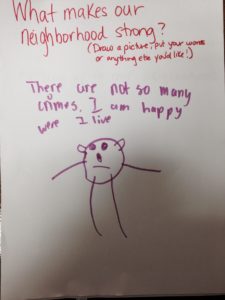 North Waco residents are not shy about their love for their neighborhood. An abundance of committed and trusted organizations and people live, work, worship and play in the neighborhood on a consistent basis. I would be remiss to try and name them all here; however, I’ve observed two main characteristics which distinguish these groups from others: their sustained commitment to learning from varying experiences and perspectives, and their deep held belief that trust is not a right due to them because of good intentions, but trust is a privilege to be earned. These practices are not cultivated overnight but develop with time.
North Waco residents are not shy about their love for their neighborhood. An abundance of committed and trusted organizations and people live, work, worship and play in the neighborhood on a consistent basis. I would be remiss to try and name them all here; however, I’ve observed two main characteristics which distinguish these groups from others: their sustained commitment to learning from varying experiences and perspectives, and their deep held belief that trust is not a right due to them because of good intentions, but trust is a privilege to be earned. These practices are not cultivated overnight but develop with time.
- Homeownership is growing in North Waco.
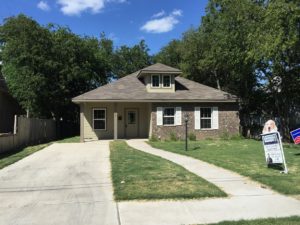 Homeownership is a major factor in creating neighborhood stability. A growing body of research points out that homeownership has the potential to positively impact educational goals.
Homeownership is a major factor in creating neighborhood stability. A growing body of research points out that homeownership has the potential to positively impact educational goals.
“Affordable and sustainable forms of homeownership can also help families achieve long-term stability. Research on the connection between homeownership and children’s education has found that homeowners tend to move less frequently than renters and that this may account for part of the difference in educational outcomes between children of homeowners and children of renters” (Holupka, C. Scott and Sandra J. Newman. 2010).
Waco Community Development was created with the lofty and ever galvanizing mission to inspire and cultivate healthy neighborhoods. In 2001, we joined the ranks of housing entities like Waco Habitat for Humanity and NeighborWorks who strived to create a culture of homeownership. For us, working within a geographically defined area proved to be a successful model. Today, the homeownership rate in Census Tract 12 (North Waco area) is 42%, an increase of approximately 7 percentage points from the 2009 sample data (Census 2014). We have seen vested homeowners become PTA officers, volunteers and mentors for students at West Avenue. One such Waco Community Development homeowner not only became the PTA Treasurer, but her son was valedictorian of his 5th grade class last May.
The complexity of factors influencing neighborhood development can make it difficult to understand what particular cause created a particular effect. There are schools of thought that believe this to be a negative thing, but I see a positive in the midst of the murkiness: It allows people and organizations to be interdependent when tackling difficult issues within our communities. It doesn’t excuse us from critically evaluating our work or from pursuing excellence; it simply means we have the opportunity to reach out to partners all around us to create even greater positive impact.
West Avenue has learned to lean on and be leaned upon and I think that’s a piece of why it’s experiencing such great success. Former teacher Ms. Goodman said it best, “The school is still a pillar. People know they can go there for anything they need and the partners have become resources for both the community and the school.”
 Alexis Christensen is a Community Organizer at Waco Community Development Corporation (Waco CDC) where she focuses on community building, leadership development and building collaborations.
Alexis Christensen is a Community Organizer at Waco Community Development Corporation (Waco CDC) where she focuses on community building, leadership development and building collaborations.
The Act Locally Waco blog publishes posts with a connection to these aspirations for Waco. If you are interested in writing for the Act Locally Waco Blog, please email ashleyt@actlocallywaco.org for more information.
by Ryn Farmer, Community Organizer, Waco Community Development Corporation (Waco CDC)
I have really been soul-searching over the last few years about what it means to be culturally competent. It is a term widely used in the social work field and has also gained a lot of traction in the medical field over the past few decades. I think it is something we need to really think about because we all come from such different experiences and ways of living. The idea behind “cultural competency” stems from the desire to respond respectfully across cultures and provide sensitive, holistic care to clients. It is about educating ourselves, before we meet people, about their culture so that we can respond thoughtfully and effectively. All of that sounds great, right? But for some reason this phrase has never really resonated with me.
Before I talk more about cultural competency, I want to make sure we are defining culture the same way. So as a basis for my thoughts, I’m defining culture as our traditions, norms, customs and beliefs in relation to gender, age, race, sexual orientation, socio-economic status, religion, language, etc. We operate from our core beliefs – both the internal and external elements that influence our life – and that affects (but does not determine) the way we think, how we behave and what we believe.
The phrase “cultural competency” indicates to me that we can arrive at something, that there is an ending point. That seems rather presumptuous because I know I could never be fully culturally competent. Of course, the philosophical underpinnings of cultural competency are good and desirable, and it is definitely a starting point. Many individuals won’t even begin a conversation about race, gender, sexual orientation, etc., because they are afraid they will say the wrong thing or because they have no idea what to say at all. We keep quiet because we are afraid of offending, or we decide to speak up and sound like a blundering idiot. So what is the answer? Don’t say anything at all and keep living in a world where deep injustice exists and too afraid to do anything? Speak from our limited knowledge and interactions with people and end up saying something foolish? Maybe there is another way… What if we approached culture in a slightly different manner? What if, instead of guiding our approach with the notion of “competence,” we approached with humility?
The idea of cultural humility is much more meaningful to me than cultural competency. In cultural humility, I can come from a place of learning rather than of expertise… a place of openness and of asking questions to better understand where someone is coming from, rather than assuming I already know them.
Dr. Melanie Tervalon and Jann Murray-Garcia have produced significant and meaningful information about cultural humility and describe it as a “life-long process of self-reflection and self-critique.” Self-awareness and reflection are the main ideas behind it, but there are other factors that come to play as well. It also involves recognizing and seeking to change power imbalances that exist in our communities and developing institutional accountability so that as institutions we are responding sensitively to the needs of people. For me, the notion of cultural humility takes away the idea that each culture has a set of rules that everyone follows. I think if we hold to the cultural competency way of thinking, then our interactions with people are limited to what we think are the beliefs and ways of living that exist in their “rulebook”.
I was at a meeting recently and one of the women at my table started speaking about how she wished we would quit viewing each other as objects and commodities but rather view each other as people. She talked about how we need to focus more on building relationships with each other first rather than focusing on yet another task to get done. We often assume we know each other because we run in similar circles or go to multiple meetings with the same people. But we don’t. We have only scratched the surface. So my friend was saying we need to take time to actually know each other. At the end of the meeting, my friend who said she didn’t want to be an object anymore was asked to lead a group. The person asking her said, “Because we need some color on our leadership team. And you’ve got color!” [Insert deep sigh of frustration and anger]. We have so far to go in being sensitive, in stopping to think about what we say before we say it and in truly looking at someone as a person. We must ask questions to really understand who someone is and not assume we know them because we have one gay friend, or one African American friend, or one Jewish friend.
If we really want to understand each other and start collaborating more together, we cannot paint a picture of any culture with a broad stroke of our brush. To do so would be foolish and circumscribed. So rather than viewing the individuals in our life as a token-something-or-other, why not actually view them as people? View them as someone with strengths to be discovered, and value them for what they can bring to the proverbial ‘table’ of life. Ask meaningful and engaging questions while coming from a place of appropriate inquisitiveness and openness. And before we do any of that, let’s start by seeking to discover our own beliefs and assumptions, and challenging ourselves in the idea that our values should be held above others.
We need to come from a place of learning. Of humility. And we need to never feel like we have arrived. Because when we believe we understand an individual because we think we understand their culture, we lose sight of the uniqueness of who they are and the gifts they can offer. Of course, there has to be grace and patience wrapped up in this whole process. I am so incredibly thankful for all of my friends who have poured out both of those things on me over the years as I struggle to better understand them. But I hope that if I, and others, come from a place of listening, of love, of reflection and of acceptance, we can accomplish a great deal more living in community together in this messy, beautiful and diverse world.
If you are interested in learning more about cultural humility, you can watch this 30 minute documentary produced by Vivian Chavez, an Associate Professor at San Francisco State. Also, my friend Jody Fernando has compiled incredibly thoughtful reflections from her blog Between Worlds into a book called Pondering Privilege: Toward a deeper understanding of whiteness, race, and faith.
 This Week’s Act Locally Waco Blog post is by Ryn Farmer. Ryn is a Community Organizer at the Waco Community Development Corporation (Waco CDC). Waco CDC helps to inspire and cultivate healthy neighborhoods. They consider a healthy neighborhood to be one that is safe, clean, and diverse; one in which it makes economic sense for people to invest and one where neighbors manage change successfully. If you would be interested in writing for the Act Locally Waco blog, please send an email expressing your interest to ashleyt@actlocallywaco.org.
This Week’s Act Locally Waco Blog post is by Ryn Farmer. Ryn is a Community Organizer at the Waco Community Development Corporation (Waco CDC). Waco CDC helps to inspire and cultivate healthy neighborhoods. They consider a healthy neighborhood to be one that is safe, clean, and diverse; one in which it makes economic sense for people to invest and one where neighbors manage change successfully. If you would be interested in writing for the Act Locally Waco blog, please send an email expressing your interest to ashleyt@actlocallywaco.org.
By Alexis Christensen
What happens when we become disillusioned with the work at hand? With the community we’ve cried for, lived in, believed in? How do we keep the picture of the beloved community from being stripped from our minds and hearts? What happens when hope seems like a far off dream?
As a community organizer, I stare straight into the eyes of these types of questions each day. Whether in the eyes of the people I work with or in the mirror reflecting my own hopelessness. I have seen tears, desperation, confusion, anger and angst in many people. Systems can feel too big, too difficult to maneuver and change, so how do we keep going? How do we live in a world with such great challenges?
For me, it is hope.
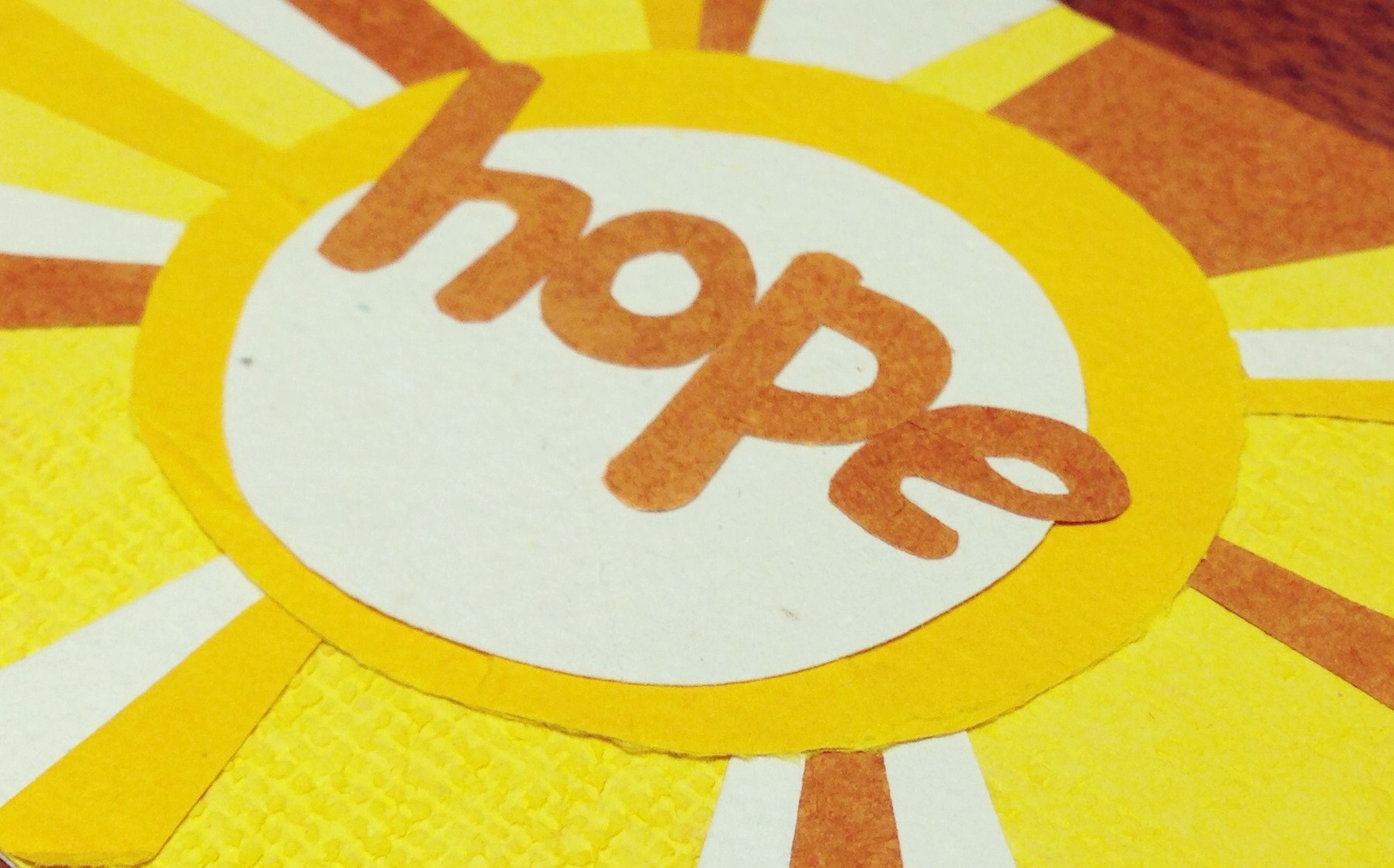 The Merriam-Webster definition of hope is “to expect with confidence.” I heard a sermon once where the pastor described hope as the confident expectation of good. I like that. When we face the difficulties of life and work in community, we cling to hope.
The Merriam-Webster definition of hope is “to expect with confidence.” I heard a sermon once where the pastor described hope as the confident expectation of good. I like that. When we face the difficulties of life and work in community, we cling to hope.
But the hope I’m talking about is more. This hope is a verb—it’s action. It’s seeing the endless challenges in life and saying yes again and again to the fight against injustice. It’s about my friends in the neighborhood who are often discounted, underutilized, and disrespected but still advocating for change together. It’s about showing up, speaking out, and holding fast. Hope is an element of good community organizing. In the process of listening, identifying leaders and topics of concerns, and gathering people together based on their self-interest, a thread of hope must be present if the effort is to be carried out effectively.
Hope motivates, inspires, and creates an environment of empowerment. I have seen parents lead initiatives in their schools, support their children and speak to power because of hope. I have seen churches and church members realize their capacity to impact their communities through their gifts and talents. I have seen neighborhood residents gather to create imaginative plans for change. The list is endless but the thread is the same, hope.
Hope follows me wherever I go when I remember that it is alive. At my office, in my car, on the streets, in the schools, it lingers. Author Barbara Kingsolver sums up this kind of hope in her book Animal Dreams: “Here’s what I’ve decided: the very least you can do in your life is figure out what you hope for. And the most you can do is live inside that hope. Not admire it from a distance but live right in it, under its roof.”
So, Waco, let’s settle down and live under hope’s roof. And while we’re there, let’s turn that hope into action for transformation in our communities.
 This week’s Act Locally Waco blog post was written by Alexis Christensen, a Community Organizer at Waco Community Development Corporation (Waco CDC). Would you be interested in writing for the Act Locally Waco blog? If so, contact Ashleyt@actlocallywaco.org.
This week’s Act Locally Waco blog post was written by Alexis Christensen, a Community Organizer at Waco Community Development Corporation (Waco CDC). Would you be interested in writing for the Act Locally Waco blog? If so, contact Ashleyt@actlocallywaco.org.
by Ryn Farmer, Community Organizer, Waco Community Development Corporation (Waco CDC)
“Never doubt that a small group of thoughtful, concerned citizens can change world. Indeed it is the only thing that ever has.” – Margaret Mead
At Waco Community Development Corporation (Waco CDC) where I am a Community Organizer, we work to inspire and cultivate healthy neighborhoods. Our Waco neighborhoods are teeming with people who are passionate, willing and ready to become engaged in what is happening in the community. They have the potential to lead positive change in their own neighborhoods.
When people are forced into leadership positions before they are prepared, however, frustrations often result. For example, they may not be effective in raising up other leaders due to lack of confidence in their own abilities. Like most of us, these passionate, willing potential leaders can become more effective with some training in leadership skills.
Up until now, however, it has most often been the case that the people who get chosen to go through leadership development sessions are not necessarily people from the neighborhoods where Waco CDC works, but people who are already in some position of power or connected to a business, institution, or organization. My colleague, Alexis Christensen, and I have been the beneficiaries of some of this leadership training, and we thought, “What would it take for us to pull together all of the tools and resources we have received over the years to create something that could specifically be used to engage the potential leaders we work alongside every day?” At Waco CDC we have always focused on identifying leaders from within the neighborhoods where we work and helping them cultivate their skills and abilities. Alexis and I thought giving this process a name and creating groups of cohorts might further establish and sustain this important work. Thus, Grassroots Leadership Training (or the catchy, “GLT”) was born.
We officially started our GLT program in October, and we are happy to announce the first three graduates! Three community members in East Waco have completed the three-session GLT training program. During the training we covered several topics, including relationships, leadership, power, culture, cultural humility, asset based community development, communication, how to lead a meeting, resolving conflict, communication, and the importance of evaluation/reflection. One participant said, “Although I have had some leadership training, I acquired more skills by attending the Grassroots Leadership Training. We had in-depth conversations that helped me to know more about the people in my community, their concerns and what we can do together within our own neighborhoods.”
The individuals who participate in the GLT receive information that they will be able to use in their communities as they seek to work together. These skills will help them transfer power from “the top” – the traditional leadership structure – and share it with their neighbors so that the people in the community can have an effective voice in what happens within their own neighborhoods and schools. The first cohort of graduates will specifically use the tools and resources from GLT as they work to receive community input and develop a plan of action for the Northeast Riverside neighborhood. As another participant said, “I learned how to become a leader in my community and make a difference. We started coming up with ideas and ways to address things in the community and we will keep moving forward to work together in our neighborhood.”
The next target audience for this program will be parents who have children in school. As parents develop and gain confidence in their leadership skills, they can start working with other parents to be a part of the decision processes that affect their children.
It is vitally important to provide a safe place for potential leaders who live, work and worship in the community to develop their skills and abilities. When they are ready, they are the ones who need to be in the spotlight. When individuals who live in communities that have been oppressed and marginalized start taking action to bring change, hope is restored. They recapture the power that has always been theirs and create an environment that allows others to do the same.
 This Week’s Act Locally Waco Blog post is by Ryn Farmer. Ryn is a Community Organizer at the Waco Community Development Corporation (Waco CDC). Waco CDC helps to inspire and cultivate healthy neighborhoods. They consider a healthy neighborhood to be one that is safe, clean, and diverse; one in which it makes economic sense for people to invest and one where neighbors manage change successfully. If you would be interested in writing for the Act Locally Waco blog, please send an email expressing your interest to ashleyt@actlocallywaco.org.
This Week’s Act Locally Waco Blog post is by Ryn Farmer. Ryn is a Community Organizer at the Waco Community Development Corporation (Waco CDC). Waco CDC helps to inspire and cultivate healthy neighborhoods. They consider a healthy neighborhood to be one that is safe, clean, and diverse; one in which it makes economic sense for people to invest and one where neighbors manage change successfully. If you would be interested in writing for the Act Locally Waco blog, please send an email expressing your interest to ashleyt@actlocallywaco.org.
- « Previous
- 1
- 2
- 3
- 4
- Next »



